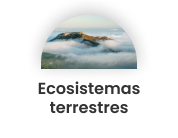
Implementation of a new model of forest bioeconomy against depopulation and fire prevention (SYNERGIC FORESTS).
PRTR Call for Proposals Project
Line of action:
Terrestrial ecosystemsStatus:
En ejecuciónLocation:
Guadalajara (Castilla La Mancha) and Cáceres (Extremadura)Geographic scope:
EspañaExecution date:
2024Duration:
09/02/2024 - 31/12/2025Total budget:
563,302 eurosAmount of aid from the Biodiversity Foundation:
535,136.90 euros (95%)Association for the Development of La Alcarria and La Campiña (ADAC)
The development of forest areas with demographic and environmental problems requires not only the strengthening of traditional sectors, but also the search for new resources linked to the opportunities of the bioeconomy.
This project seeks the socioeconomic development of forest areas by integrating an important part of the resources and ecosystem services. It incorporates work in burned areas for their recovery, sustainable forest management that takes biodiversity into account, but also incorporates new forest products and uses, including the generation of bioproducts and CO2 certification. In fact, forest management is proposed to work in stands with little evolution and high fire risk and seeks to reduce this risk, increase CO2 fixation and generate resources for the owners. By incorporating actions in crop areas and extensive livestock farming, a mosaic landscape is created, which is very effective in preventing the risks of climate change and reducing the spread of fires, and acts on the entire territory through its integrated development, and also contributes to the diversification of forest use.
This integrated project aims to create an economic model based on different forest uses, through the application of a mosaic landscape:
- Actions to improve biodiversity in 700 hectares (promoting the presence of fallen trees through banding, installation of nesting boxes and shelter, and increasing the number of ponds and water points), and restoration of irrigation ditches (85 hectares). It contemplates the thinning of forest stands (33 hectares) stagnant due to high density to obtain bioproducts by pyrolysis of forest residues generated (4 tons of biochar and 8 tons of wood vinegar), for a subsequent application of biochar in 2 hectares of vegetable crops in the areas of Vera and Sierra Norte and Wood vinegar as biofertilizer in 2 hectares for irrigated plants and as herbicide in 1 hectare of fruit crops. Certification and marketing of CO2 offsets (certification of CO2 absorption on 150 ha)
- Promotion of extensive Verata goat breeding in the region of La Vera (through the installation of watering troughs in 5 farms and the design and presentation of 4 new meat products already packaged: tasajo, caldereta, roasted pieces and pâté, to local industries), and 1 replicability, networking and transferability plan.


Implementation of a new model of forest bioeconomy against depopulation and fire prevention (SYNERGIC FORESTS).









 back to search
back to search 